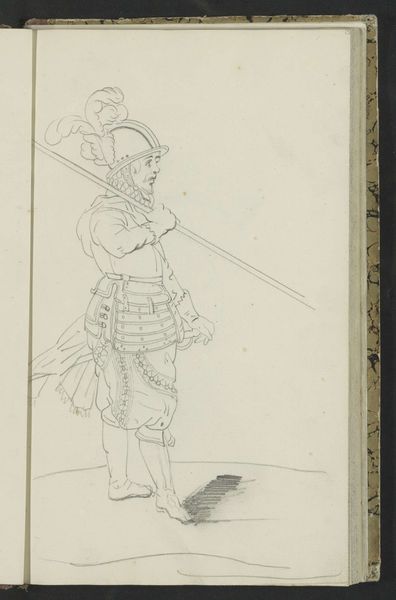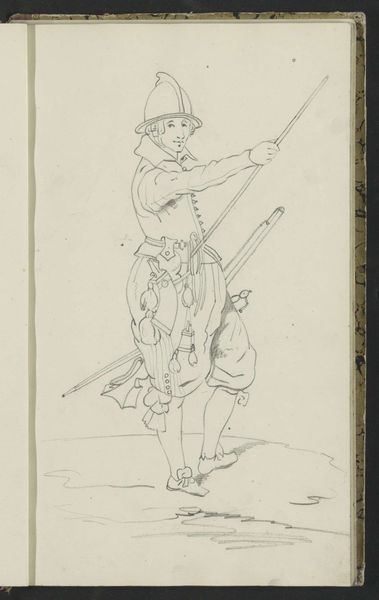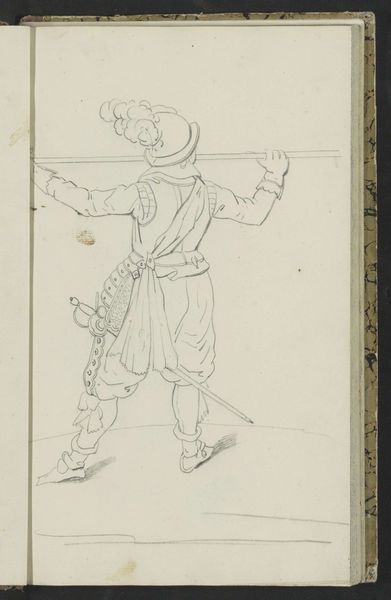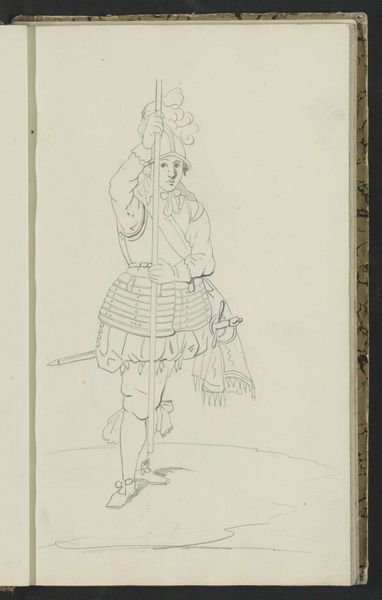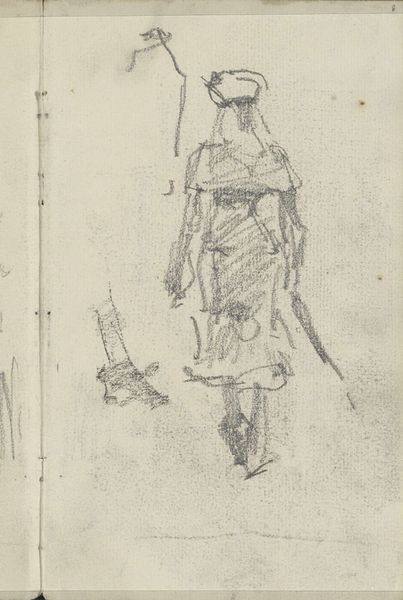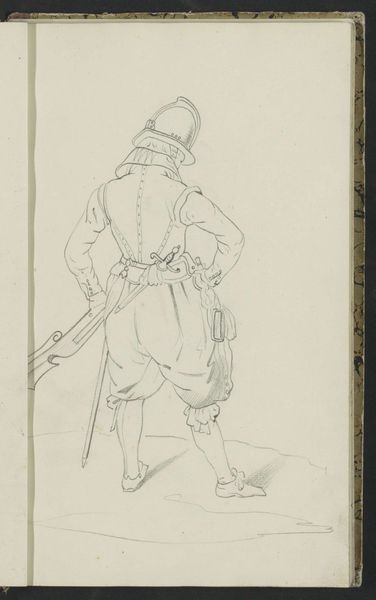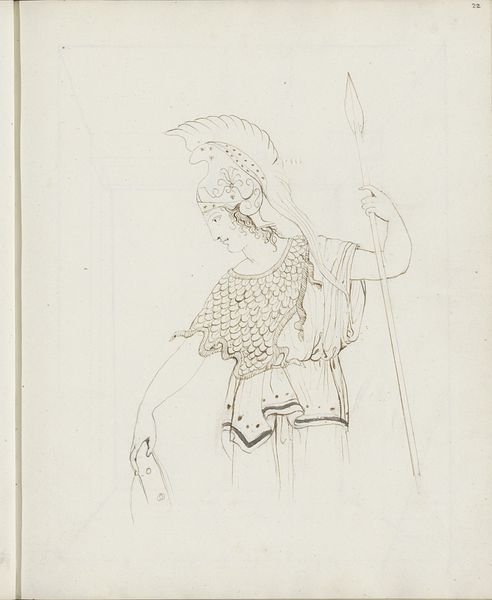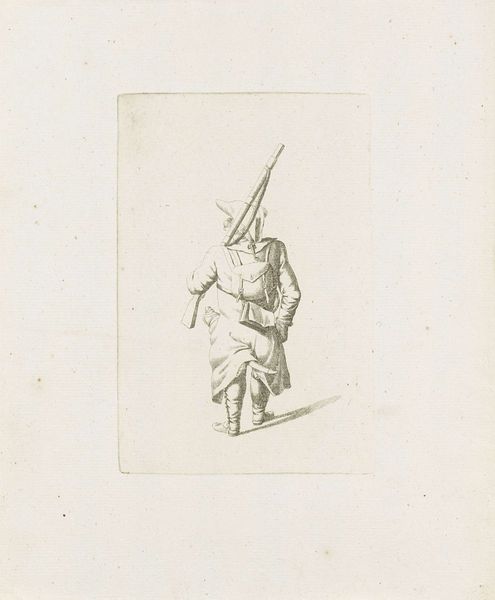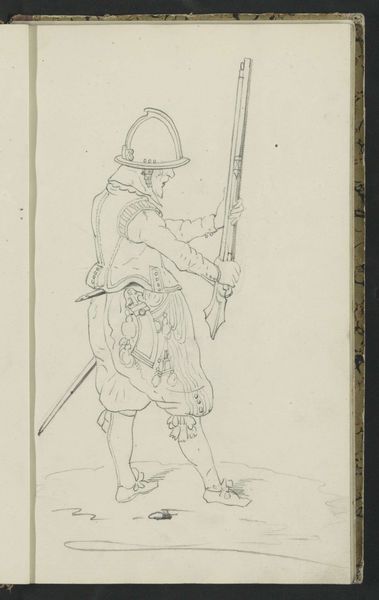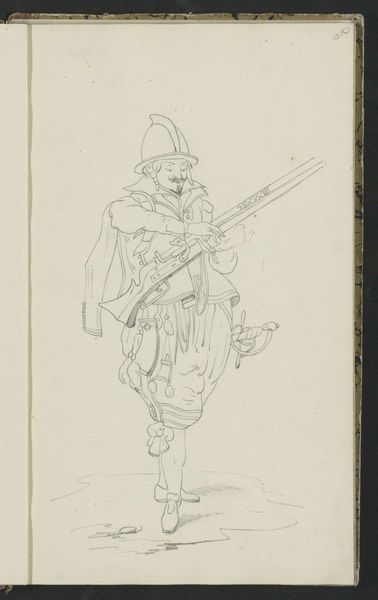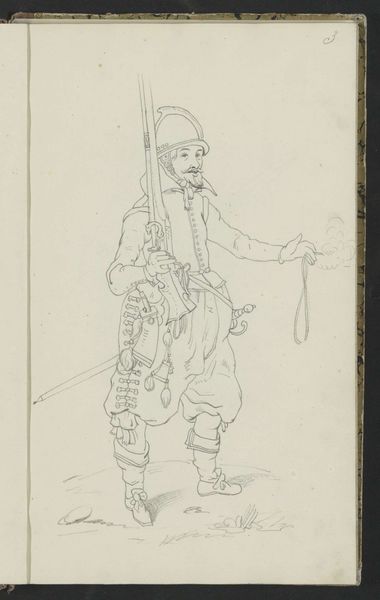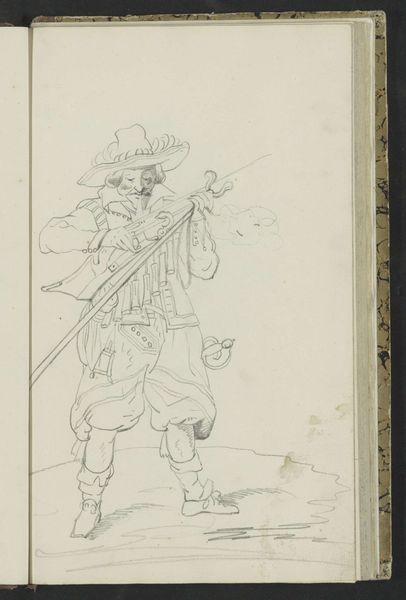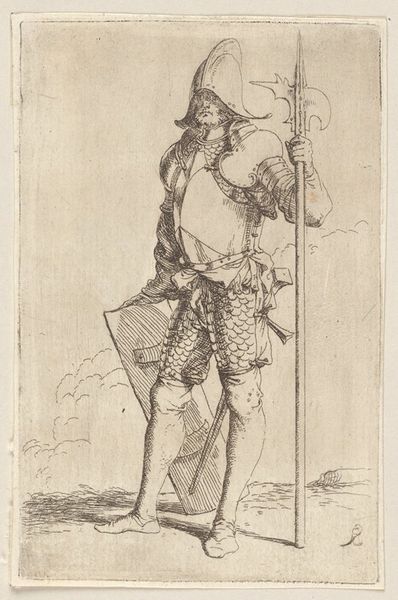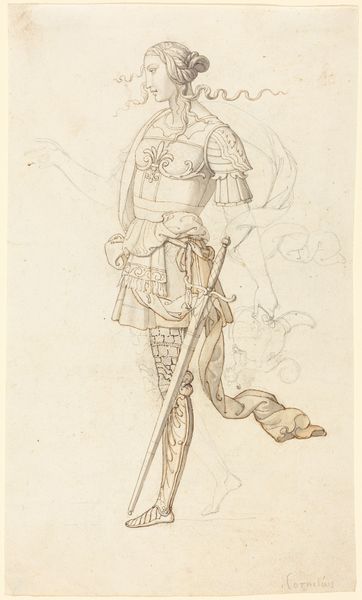
Soldaat die zijn musket op de linkerschouder draagt en zijn spies in de rechterhand vasthoudt c. 1826 - 1888
0:00
0:00
drawing, pencil
#
portrait
#
drawing
#
imaginative character sketch
#
quirky sketch
#
pen sketch
#
sketch book
#
personal sketchbook
#
sketchwork
#
pen-ink sketch
#
pencil
#
sketchbook drawing
#
genre-painting
#
storyboard and sketchbook work
#
sketchbook art
Copyright: Rijks Museum: Open Domain
Curator: Here we have a pencil and pen drawing titled "Soldaat die zijn musket op de linkerschouder draagt en zijn spies in de rechterhand vasthoudt" by Johannes Antonius Canta, likely created sometime between 1826 and 1888. Editor: The figure has such a whimsical quality. The lightness of the sketch and the way he holds his weapon almost mockingly gives it a comic appeal. It feels more like character study than anything intended for serious consideration. Curator: I agree; it's important to view this within the context of Canta’s time, recognizing the rise of genre painting, a movement focused on scenes of everyday life. How did shifts in patronage and social structures enable artists to explore subjects beyond the conventionally 'heroic'? The fact it's a sketch suggests a lack of a commission. Editor: Right. The medium is the message, to some degree. Given the sketchbook origins, one could easily consider the cultural history inherent in portraying a soldier this way at all—it wasn't necessarily considered as 'high' of a subject matter, or, necessarily a 'good' look in comparison to idealized history paintings or traditional portraiture during Canta's time. Was Canta playing into a class narrative? Curator: Possibly. The fact that it’s a quick drawing suggests the casual nature of observation but can it offer broader socio-political commentary? Were certain behaviors and beliefs deemed worthy of artistic consideration? What ideologies about gender or class might be at work in a seemingly harmless drawing like this one? Editor: Good points. Even details like the plume in the hat and the soldier’s slightly foppish stance raise interesting questions. It's fair to speculate, particularly if these types of illustrations weren’t seen by many outside the artist’s circle, because it makes me question what the artist’s specific vision really was in the context of his lived experience. Curator: Ultimately, art, whether a fully realized painting or sketch, interacts with—and reflects—the value systems of its time. That is to say that this figure reveals as much about the cultural context of art production, art marketing and art consumerism, which might, at times, be viewed through a narrow lens. Editor: Yes. The value lies, then, in understanding both the historical position and present social realities that can be derived through these depictions. Even a seemingly quirky drawing such as this can tell quite a complicated story.
Comments
No comments
Be the first to comment and join the conversation on the ultimate creative platform.
